Planning a budget for social media marketing can be a daunting task for plenty of business owners and marketers. You might be asking, “How much should I invest to see results?” or, “What’s the right balance for my business?” It’s a valid concern. After all, allocating your marketing budget wisely can make or break your business.
Factors That Influence Social Media Budgeting
Business Goals
Are you focusing more on getting brand awareness, conversions or customer retention? Every goal has its own objectives and budget. For instance, awareness campaigns may need larger reach, while conversion driven efforts may benefit from targeted ads.
Industry and Competition
Your line of business will also play a role in determining the costs. Competitive industries such as finance or technology are competitive within a certain wear-out period, they tend to have higher ad costs because of increased competition for clicks
Platform-Specific Costs
The costs also differ according to platform. Ads on Meta platforms such as Facebook and Instagram usually cost less for certain demographics while newer advertising platforms such as TikTok may have an entirely different pricing system. Understanding where your target audience spends their time is essential.
Ad Creative and Campaign Length
Advertising is an important part of any business and the quality of your ad creative can impact costs. Investing in high-quality videos and images might require a larger budget but can return better interaction over time. Also, the length of the campaign will also determine the level of overall cost.

Industry Benchmarks and Budget Recommendations
So, what should you realistically expect to spend?
B2B vs. B2C
It is common for B2B companies to spend less for social media compared to B2C as they invest heavily to reach consumers.
Business Size
For example, small businesses tend to have a budget of around $500 to about $1,000 every month while for larger companies this could be several thousands.
Cost Per Click (CPC) and Cost Per Acquisition (CPA)
A cost per click ad can range from $1.50 to $5.00 whereas the cost per acquisition is going to vary but is still important for assessing campaign effectiveness.
Calculating ROI for Your Social Campaigns
Measuring your return of investment ratio is crucial when it comes to budgeting.
Key Metrics
Examine conversion rates, rates of engagement and customer life cycles (CLV). These metrics are useful in providing insight into how effective your campaigns are at turning leads into customers.
Tracking ROI
Differentiate between organic and paid social. Paid campaigns offer clearer metrics, while organic growth may require more qualitative assessment.
Analytics Tools
Reporting tools like Meta for Business, Hootsuite, Buffer, and others serve as useful tools to simplify your strategies and add a level of analytics.Regularly review these analytics to identify what’s working and adjust your budget accordingly.
Trendy Threads: Transforming Engagement into Revenue with Savvy Budgeting
Trendy Threads, the clothes brand for young adults, spent $1500 per month on social marketing for the first 3 months specifically on Facebook and Instagram to create awareness, as they were new on the market. After three months, they observed high engagement but low conversion rates of just 1%. As a result, they raised the level of their budget to $2,500, changed their strategy to retargeting ads to previous visitors, worked with micro influencers on ads and further improved their ad creatives. As a result, conversion rate improved to 3.5%, significantly improving their ROI and driving higher sales. This highlights the importance of being flexible with your budget and using data-driven insights to optimize social media marketing efforts
The Importance of Flexibility in Your Social Media Budget

In conclusion, determining how much to spend on social media marketing involves understanding your specific needs and goals. By strategically allocating your budget and measuring ROI effectively, you can maximize your returns and drive growth for your business. One crucial aspect to remember is that your budget should be flexible. Social media trends can shift rapidly, and what works today might not work tomorrow. Regularly reassess your budget based on performance, industry trends, and changes in your business goals.
So the question of how much to spend on social media marketing really depends on what you need and want. If you spend wisely and track ROI effectively, you could maximize your returns. Social media trends change fast, what is working today might not work tomorrow so try to keep your budget as flexible as possible. Regularly reassess your budget based on performance, industry trends, and changes in your business goals.
Ready to maximize your social media budget? Let us craft a custom plan for your business to ensure every dollar counts. Contact us today!






















.png)



.svg)




